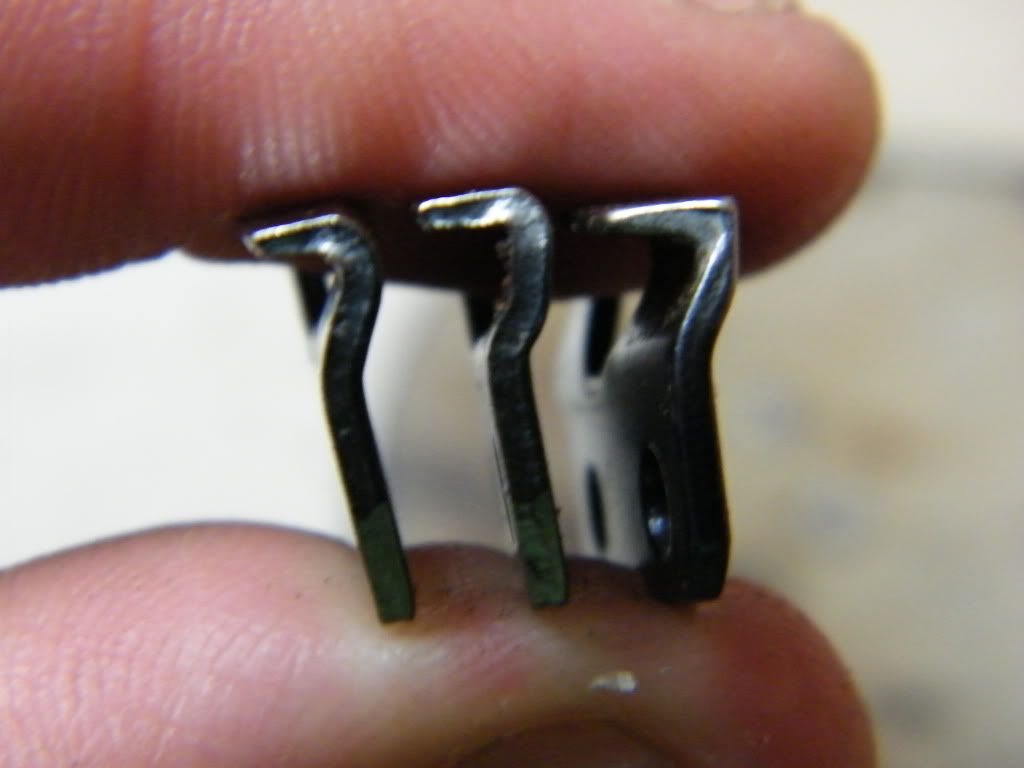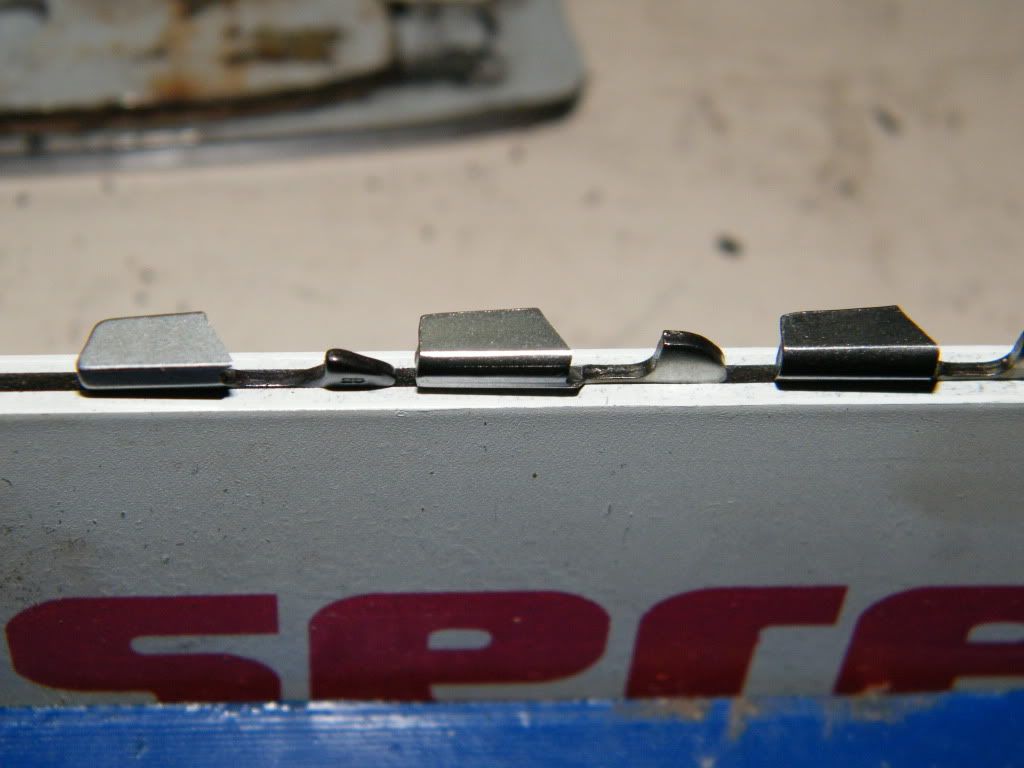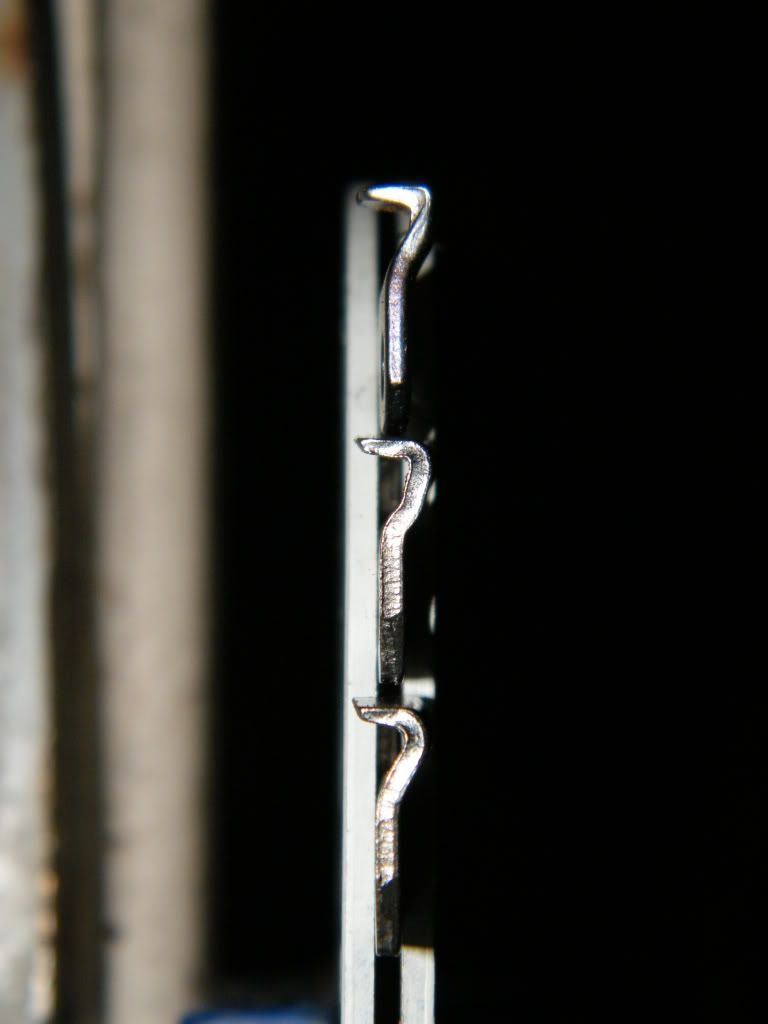Mates, I really appreciate you staying up all night

writing this valuable advice from your (truly) great store of experience :wave:
As an expat Brit, who once associated with a truly wild-crazy Auzzie, I have a special appreciation for the national character, big-hearted and ready for anything. Australia is a great country I never had the pleasure of visiting. I'd love to see you blokes felling one of those huge hardwoods with those huge bars!
Dingeryote, those photos are exactly what I needed! I couldn't find anything similar. Thanks! They tell me I am using a semi-chisel; I'll make sure I get Stihl next time and give it a go, but I'd like to find a cheaper alternative if there is an equivalent one. I will also try Carleton chipper, said to be more abrasion-resistant than equivalent quality semi-chisel.
According to everything I have read, the Inject-a-sharp is coated/impregnated using an electrolytic process, so the bond should be better than epoxy. On the other hand I did run across a magnified illustration of it - it looked like flakes adhered to the surface - and the author noted they flaked off. No disagreement here in principle, especially about the beak. The few opinions are very mixed.
I have decided not to convert until I test a new 50cc Husky, bar and optimal .325 chains, and then only if all else fails (I was considering buying the saw set up for 3/8 to save the cost of converting later). One of the reasons for this decision is that my old bar groove is splayed wide so the chain does not stand upright, but wiggles around, and all of my used chain has rivet wear after only a couple of sharpenings: one 2/3-used chain has about 1/32" of wear between two adjoining rivets (I don't know what normal wear would be). These factors, plus imperfectly sharpened, less than ideal chain, may have caused my problems more than the sand presumed to be present. So I need to re-evaluate with good equipment and technique.
A clean start should tell me a lot if I pay attention, and test systematically. I know a little about chain care in the field, although there are times frustration has driven me to ignore it. I know a great deal more now, thanks to the good people on this thread. My only difficulty is hand-sharpening, which I never mastered after 40 years of occasional cutting. I'm not sure if I have the patience to try again. I guess I can try to touch up machine-sharpened cutters in the field, but I'll probably just swap chains at the first sign of dulling (I will have several) - I'm more interested in reducing total cutting time and effort (age, you know) than in maximizing chain life.
Rick, the e-book you recommended is a real gem: thanks! It has everything in one place that I have found in bits and pieces elsewhere, and much more. Really well written! I'll be printing a copy for the shop. Do you use the Carleton sharpening system or their chains?
I have another 2 questions: (collective groan). My blown Husky 345 manual says that the bar accepts any of the following drive links: .050, .058, .063. I don't know if this will be the case for the next saw. I just measured two chains: one runs about .046 (Oregon mentioned in earlier post), the other (no name) about .026. Both were supplied by a supposedly competent shop. What gives? I would have thought there would be a narrow range of acceptable tolerance in order to help keep the chain upright and reduce uneven wear on the rails (if indeed, that is one of the functions of the drive links - it is the other side of the coin of the rails being excessively separated, allowing the chain to wobble - so I'm told).
The Carleton e-book suggests changing sprockets every chain or so. I never heard of such a thing. Isn't that a bit excessive? How about changing based on wear: how much is acceptable?
I wish you could have one on me: Cheers

Charlie








 writing this valuable advice from your (truly) great store of experience :wave:
writing this valuable advice from your (truly) great store of experience :wave: 
